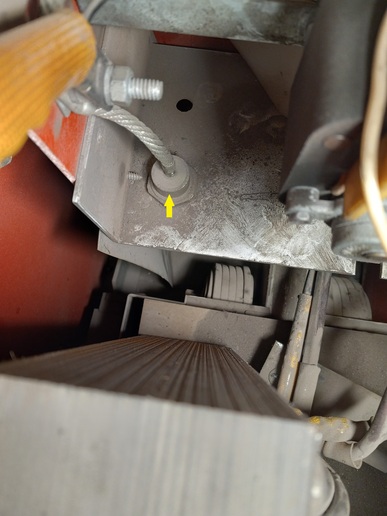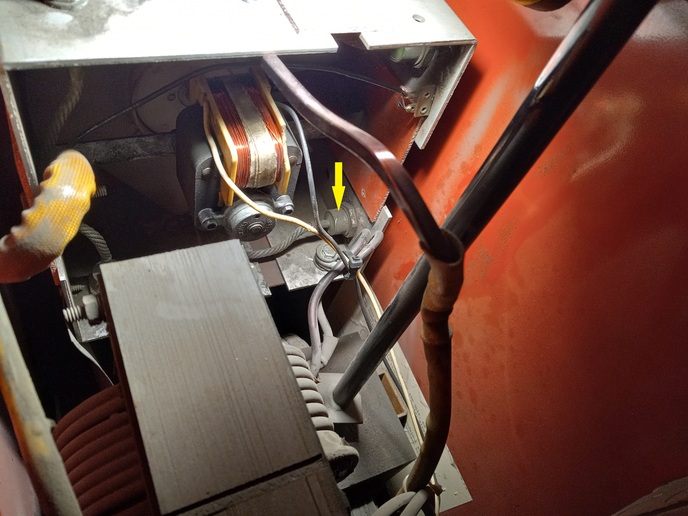The welder is a Century AC/DC 295. You can read the post below for more info as well, but the DC side of the welder will not weld, there is no spark at all on the DC side. The AC side works fine.
Pardon what might be considered a stupid question, but I'm a total newbie on this kind of issue. I've attached a couple of pictures of what I think are the diodes in the welder. Can you confirm that these are the diodes? There are four of them in there. I've placed yellow arrows pointing to them. The size of the round part of these would be about 1 inch high and 1 inch wide and the wire coming off of them is about 3-4 inches long.
I did inquire with a local shop that works on welders. Just an estimate to figure out what is wrong with it is 110 dollars and I was told the price to fix it would very likely be more than the machine is worth. Getting into this level of electrical diagnosis is outside of my comfort zone for sure.
These appear to be very easy to remove, just a nut on the diode end and a bolt through a wire strap on the other end. If these are the diodes, how do I go about testing them to find out if they are bad?


Pardon what might be considered a stupid question, but I'm a total newbie on this kind of issue. I've attached a couple of pictures of what I think are the diodes in the welder. Can you confirm that these are the diodes? There are four of them in there. I've placed yellow arrows pointing to them. The size of the round part of these would be about 1 inch high and 1 inch wide and the wire coming off of them is about 3-4 inches long.
I did inquire with a local shop that works on welders. Just an estimate to figure out what is wrong with it is 110 dollars and I was told the price to fix it would very likely be more than the machine is worth. Getting into this level of electrical diagnosis is outside of my comfort zone for sure.
These appear to be very easy to remove, just a nut on the diode end and a bolt through a wire strap on the other end. If these are the diodes, how do I go about testing them to find out if they are bad?



